Để cải thiện kỹ năng đọc nhằm chuẩn bị tốt cho kỳ thi IELTS, các bạn hãy luyện tập qua Cambridge IELTS 19 – Test 1: Reading Passage 3 – The persistence and peril of misinformation nhé!

A. Đáp án
| Câu 27: D |
Câu 31: G | Câu 35: E | Câu 39: NO |
| Câu 28: A | Câu 32: J | Câu 36: C | Câu 40: NOT GIVEN |
| Câu 29: C | Câu 33: H | Câu 37: YES | |
| Câu 30: D | Câu 34: B | Câu 38: NOT GIVEN |
B. Giải thích đáp án đề Cam IELTS 19, Test 1, Reading Passage 3
| Câu hỏi + Đáp án | Bài đọc |
|
Câu 27 What point does the writer make about misinformation in the first paragraph? A. Misinformation is a relatively recent phenomenon. B. Some people find it easy to identify misinformation. C. Misinformation changes as it is passed from one person to another. D. There may be a number of reasons for the spread of misinformation. => Đáp án D: Có nhiều lý do cho việc lan truyền thông tin sai lệch, đó là “ Gain strategic advantage ( Có lợi thế chiến lược), Motivate others to action (Xúi người khác hành động) , Protect interpersonal bonds ( Bảo vệ mối quan hệ cá nhân). |
Thông tin dòng 4,5 đoạn 1
Deceiving others can offer an apparent opportunity to gain strategic advantage, to motivate others to action, or even to protect interpersonal bonds |
| Câu 28 What does the writer say about the role of technology?
A. Misinformation is a relatively recent phenomenon. B. Some people find it easy to identify misinformation. C. Misinformation changes as it is passed from one person to another. D. There may be a number of reasons for the spread of misinformation.
=> Đáp án A: Công nghệ giúp mang lại giải pháp cho sai lệch thông tin – Chỗ “Yet the means to correct…. Đại ý là: Tác hại của sai lệch thông tin ( Misinformation) ngày càng lan rộng ( looms larger) -> Nhưng (Yet) cách thức để khắc phục (means to correct) vẫn là ở bản chất của truyền thông. |
Thông tin dòng 3,4 đoạn 2
Yet the means to correct misinformation might, over time, be found in those same patterns of mass communication and of the facilitated spread of information |
| Câu 29: What is the writer doing in the fourth paragraph?
A. comparing the different opinions people have of misinformation B. explaining how the effects of misinformation have changed over time C. outlining which issues connected with misinformation are significant today D. describing the attitude of policy makers towards misinformation in the media => Đáp án C:Tác giả đang liệt kê (outlining) các vấn đề đi kèm với Misinformation, ở 3 cấp độ khác nhau |
Thông tin dòng 3-6 đoạn 4 ( Chỗ First of all, Secondly, Thirdly) First of all, people who encounter misinformation tend to believe it, at least initially. Secondly, electronic and print media often do not block many types of misinformation before it appears in content available to large audiences. Thirdly, countering misinformation once it has enjoyed wide exposure can be a resource-intensive effort.” |
| Câu 30: What point does the writer make about regulation in the USA?
A. The guidelines issued by the FDA need to be simplified. B Regulation does not affect people’s opinions of new prescription drugs. C. The USA has more regulatory bodies than most other countries. D. Regulation fails to prevent misinformation from appearing in the media. => D:Việc quản lý không ngăn chặn thông tin sai lệch trên media – Chỗ “Such programs do not keep false advertising off the airwaves – Các chương trình (như kiểm duyệt (Censoring), tố cáo tin sai sự thật ( Bad Ad)) không khiến cho các quảng cáo sai khỏi vùng phủ sóng ( airwaves)
|
Thông tin 2 dòng cuối đoạn 6
Such programs, although laudable and useful, do not keep false advertising off the airwaves |
|
Câu 31: Although people have…..to misinformation, there is debate about precisely how and when we label something as true or untrue => Đáp án G: Frequent exposure. Nội dung câu này là: Khá thường xuyên để mọi người gặp thông tin sai Chú ý phù hợp keywords: “Routine (a – thường xuyên) = Frequent exposure (tiếp xúc thường xuyên)”. VÀ từ “Exposure” sẽ đi với “to” |
Thông tin dòng 2 đoạn 5
it is fairly routine for individuals to come across information that is false” |
| Câu 32: The philosophers about how people engage with Descartes and Spinoza had ……information
=> Đáp án J: different ideas Nội dung câu này là: 2 người được nhắc đến có dự đoán (predictions) khác nhau Chú ý phù hợp keywords: “Conflicting predictions = Different ideas”. Câu này dễ bị nhầm với đáp án A. Constant conflict ( Xung đột liên tục), trong đoạn này hoàn toàn không nhắc tới ý “Constant” giữa 2 người này |
Thông tin dòng 5 đoạn 5 the 17th-century philosophers René Descartes and Baruch Spinoza described human information engagement, with conflicting predictions that |
| Câu 33: Moreover, Spinoza believed that a distinct………is involved in these stages.
=> Đáp án H: mental operation Nội dung câu này là: Xác nhận hoặc từ chối tin sai thông qua một quy trình nhận thức tách biệt. |
Thông tin dòng 6 từ dưới lên đoạn 5
Verify or reject it through a separate cognitive process” |
| Câu 34+ 35: Recent research has provided…….or Spinoza’s theory and it would appear that people accept all encountered information as if it were true, even if this is for an extremely……..and do not label the information as true or false until later.
=> Câu 34: B additional evidence Chú ý phù hợp keywords “ Recent decades, Research = Recent research” => Câu 35: E short period Nội dung câu này là: Mọi người có xu hướng tiếp nhận mọi thông tin mới, như thể là nó đều đúng, trong một
|
Câu 34: Thông tin dòng 4-6 từ dưới lên đoạn 5
In recent decades, empirical evidence from the research teams of Erik Asp of the University of Chicago and Daniel Gilbert at Harvard University, among others, has supported Spinoza’s account” – Dịch: Bằng chứng quan sát….đã bảo chứng cho giải thích của ông Spinoza. Câu 35: : Thông tin dòng 3-4 từ dưới lên đoạn 5 people appear to encode all new information as if it were true, even if only momentarily |
|
Câu 36: This is consistent with the fact that the resources for scepticism and the resources for perceiving and encoding are in…… in the brain. => => Đáp án C: different locations Nội dung câu này là: Khả năng não (resources) cho sự nghi ngờ (Skepticism)…nằm ở vùng khác nhau của não |
Thông tin Dòng cuối đoạn 5
mental resources for skepticism physically reside in a different part of the brain than the resources used in perceiving and encoding |
| Câu 37: Campaigns designed to correct misinformation will fail to achieve their purpose if people are unable to understand them.
=> Đáp án YES Chú ý phù hợp keywords: “Corrective campaigns = Campaigns to correct( Các dự án sửa thông tin sai lệch)”, “Persuasive (Thuyết phục) = Achieve purpose”, “Audience comprehend= Understand” |
Thông tin dòng 2,3 đoạn 7 “For corrective campaigns to be persuasive, audiences need to be able to comprehend them” |
| Câu 38: Attempts to teach elementary school students about misinformation have been opposed.
=> Đáp án NOT GIVEN Đoạn này chỉ nhắc đến “Elementary school”, không nhắc đến nội dung “ Phản đối “Opposed” nỗ lực dạy học sinh cấp 1 về thông tin sai lệch”. |
Thông tin dòng 7 đoạn 7 “That some audiences might be unaware of the potential for misinformation also suggests the utility of media literacy efforts as early as elementary school” |
| Câu 39: It may be possible to overcome the problem of misinformation in a relatively short period.
=> Đáp án NO Nội dung câu này là: Hành trình (để giải quyết Misinfo) sẽ dài và gian truân. Chú ý phù hợp keywords: “Solutions and remedies (Giải pháp và thuốc chữa” = Overcome problem”. Mâu thuẫn keyword: “Long and arduous >< Short” |
Thông tin dòng 3 đoạn cuối “The journey forward undoubtedly will be a long and arduous one” |
| Câu 40: The need to keep up with new information is hugely exaggerated in today’s world.
=> Đáp án NOT GIVEN Nội dung câu này là: Sai lệch thông tin xảy ra do khả năng có thể mắc lỗi của con người và nhu cầu thông tin con |
Thông tin dòng 7 đoạn cuối “Misinformation arises as a result of human fallibility and human information needs.” |
Trên đây là toàn bộ giải thích đáp án cho đề Cambridge IELTS 19, Test 1, Reading Passage 3: The persistence and peril of misinformation được biên soạn bởi đội ngũ học thuật của IELTS Lab. Chúc các bạn học tốt!
>> Tham khảo thêm: https://www.youtube.com/watch?v=hT4uSyRrUE4
>> Đọc thêm: https://ieltslab.edu.vn/cach-lam-dang-bai-matching-infomation-trong-ielts-reading/
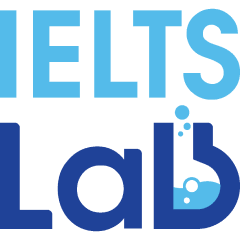



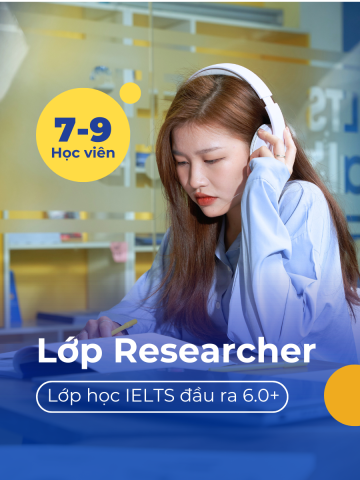

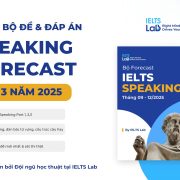

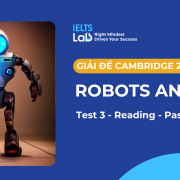

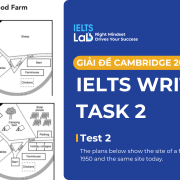

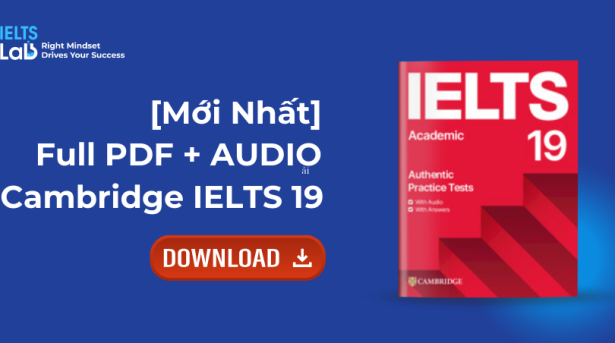





[…] >> Xem giải thích chi tiết đáp án Reading Cam 19: The persistence and peril of misinformation […]